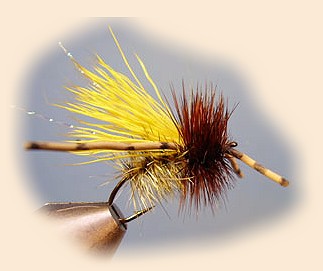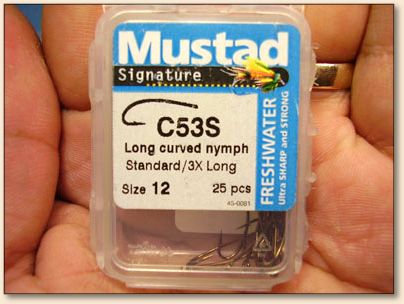
1. Mount a Mustad C53S in your vise jaws and attach
your tying thread. Advance the thread to the rear of
the hook just above the barb.
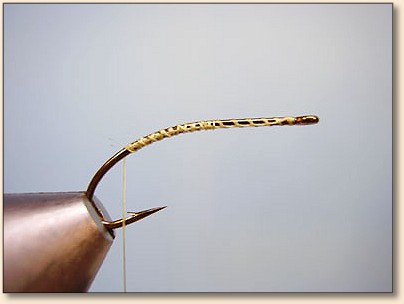
2. Select a greatly undersized premium grizzly dyed
yellow saddle hackle. The hackle should be smaller
than the hook gap. Strip the barbs from the end of
the stem and secure it at the point where your thread
is hanging.
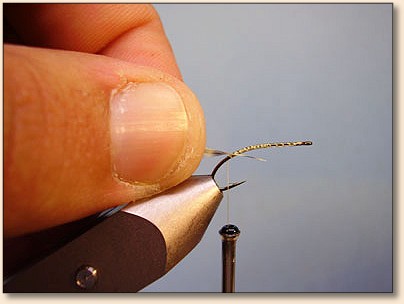
3. After securing the saddle, continue to bind the stem
to the hook as you advance the thread to a point about
2/3 of the way forward.
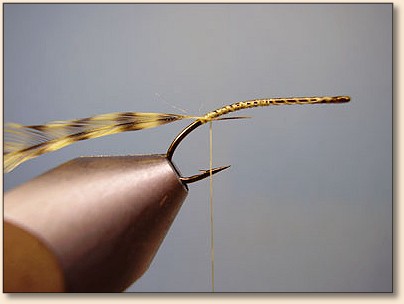
4. Apply a tacky dubbing wax to your thread.
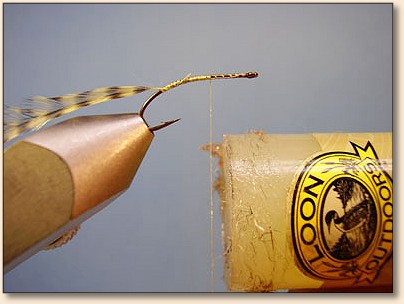
5. Touch-dub a nice blend of hare's-mask to your thread.
I prefer to blend my own dubbing, and I'm sure to run it
through a coffee grinder to "fluff" it up before touch
dubbing. You just want to very lightly touch the mass
of dubbing to the waxed thread--you want an even blend
of guards and underfur.
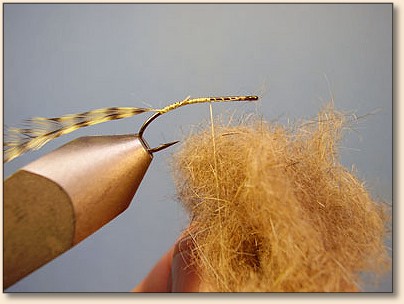
6. Once the thread has been dubbed, spin it counter-clockwise
(for righties) to boost durability and to give it a nice
uniform distribution.
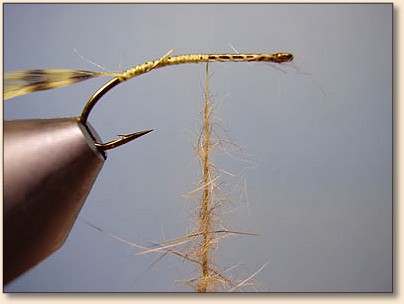
7. Dub back to the saddle, then forward again to the 2/3 mark.
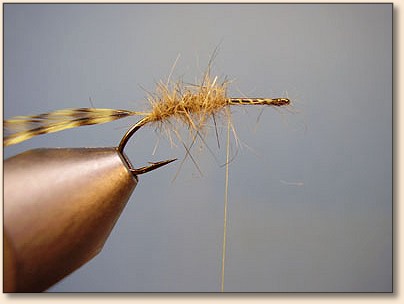
8. Now, with very tight and closely spaced wraps, palmer
the saddle forward to the 2/3 mark. It is important to
use a premium feather with great length so that you can
palmer with your fingers to achieve tight wraps. Get
as many wraps as you can. I prefer to wrap with the barb
curvature forward as this utilizes the natural composition
of the feather and makes for a stronger fly whose barbs
will not lay back. Secure the hackle with two tight thread
wraps and clip the excess.
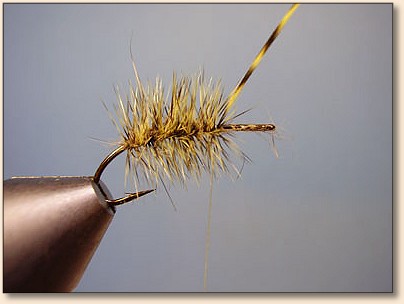
9. Secure one strand of pearl Krystal Flash to the top
of the hook just ahead of the hackle. Take a few wraps
of thread forward.
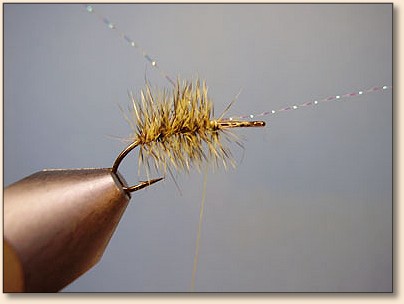
10. Next, fold back the front section of Krystal Flash to
the rear and bind it there with several tight thread wraps.
Trim it to length (about 1 1/2 hook lengths). This method
prevents the flash from pulling out.
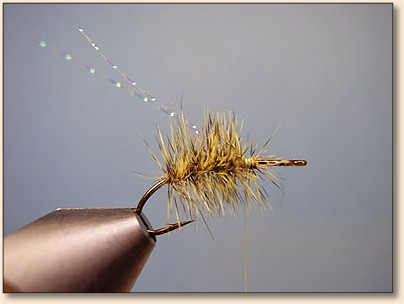
11. Select, cut, and remove a small bundle of yellow deer
hair. There is no need to overdose the size of the hair
bundle as it does little for buoyancy. And it's purpose is to mimic
a wing and to provide visibility to the angler. Grasp the
bundle by the tips and run a fur comb (shown is a comb from
Wasatch Tools) through the base of the hair to remove
underfur and shorts.
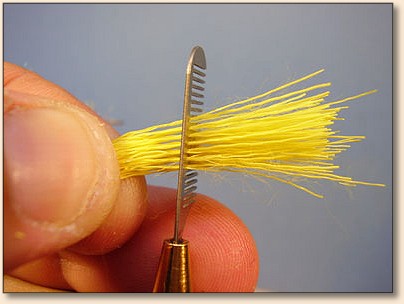
12. This is what will come out. Discard.
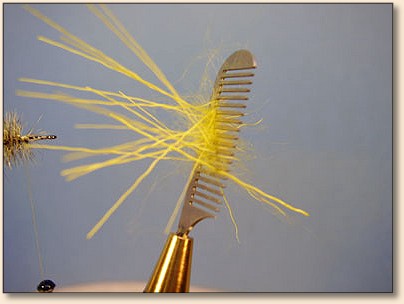
13. Stack the bundle of hair to even the tips.
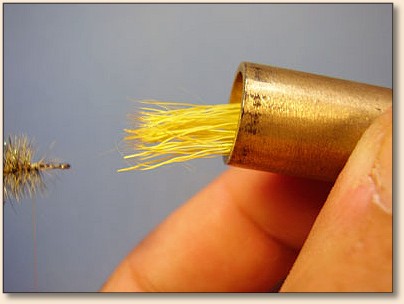
14. Measure, with the tips to the rear, for length and
clip the excess butt ends. Length should be about 1.5 to
1.75 hook lengths.
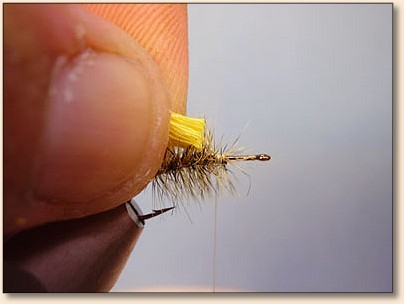
15. Secure the bundle immediately in front of
the abdomen with several tight thread wraps.
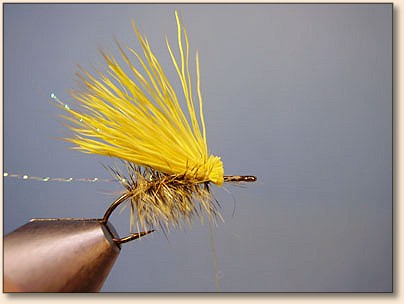
16. Smooth the butt ends with thread and build
a nice taper for the abdomen.
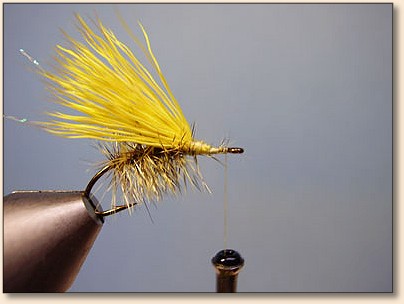
17. Mount the rubber hackle on the near side of the
hook. I begin at the front and bind to the rear. I
also leave the legs long at this point. I bind the
legs back to the start of the abdomen.
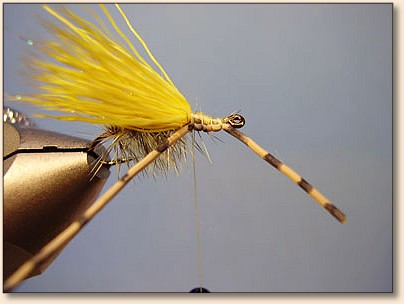
18. Repeat for the far side.
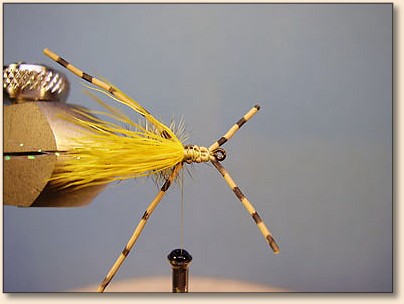
19. Select an undersized grizzly dyed coachman brown
saddle. Strip the barbs from the end and secure at
the rear of the thorax section. Size the hackle to
be just larger than the abdomen hackle--or just
barely larger than the hook gap.
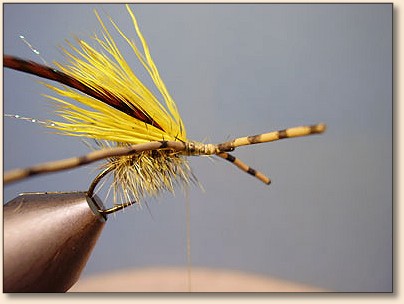
20. Touch dub some hare's-mask and build the thorax underbody.
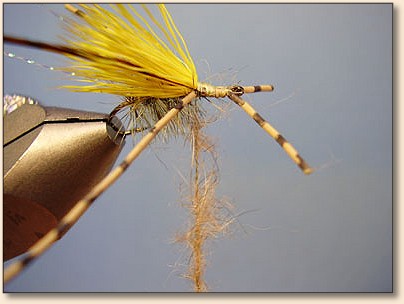
21. Dubbed thorax.
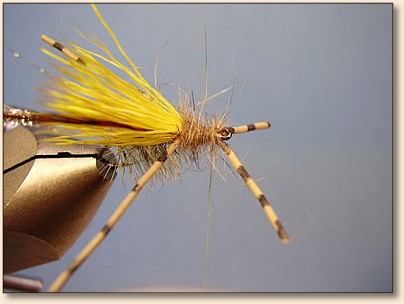
22. Palmer the coachman saddle up to the front
legs with tight and close wraps.
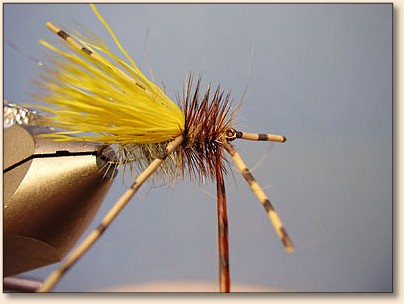
23. Reverse palmer back to the abdomen, again
using tight and close wraps.
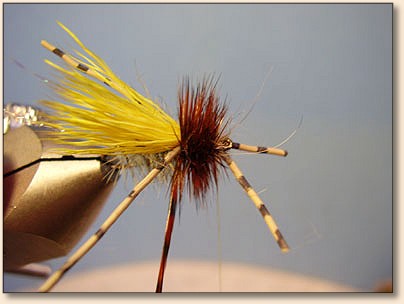
24. Then palmer back to the front legs. This will
build an extremely dense hackled thorax with hundreds
of stiff hackle barbs acting as tiny outriggers. The
dark color offers a good visual for glared waters as
well as a stark contrast that I feel triggers strikes.
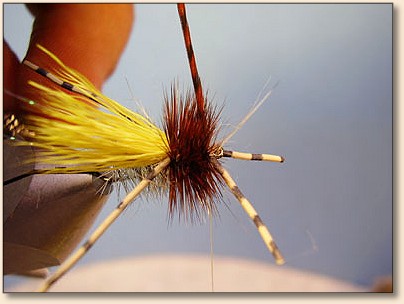
25. Secure the hackle behind the front legs with
two very tight wraps of thread.
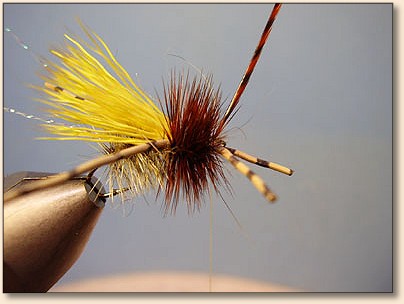
26. Clip the excess hackle.

27. Next, with force, pull back the hackle barbs and
rubber legs to expose the hook eye. Build a small head
that keeps the barbs out of the way; whip and snip.
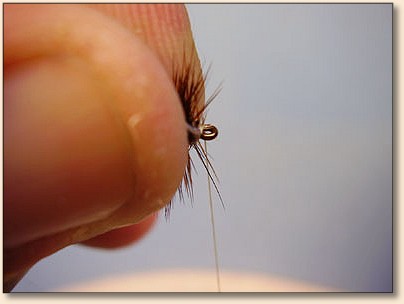
28. The final step will be to trim the legs. I cut the
rear legs to be just a tad longer than the wing; the
front legs are just long enough to provide some stability
and action. If they are too long they get in the way of
knotting the fly to the dropper tippet. This fly is tied
to the tag end of a triple surgeons knot.
Note: The fly was removed from the vise for effect only
as it is easier to see the leg proportions sans vise.
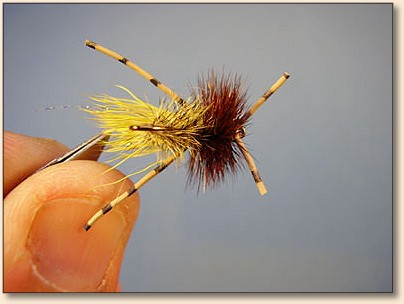
29. A completed MSA Hopper!
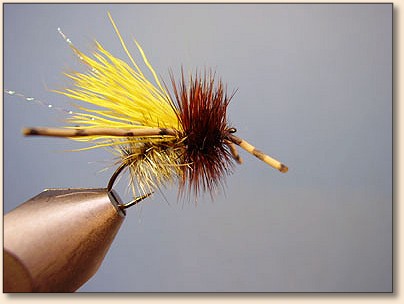
30. Top view. Notice the contrast as well as the bright
wing. This fly will be visible under various conditions. ~ LW

